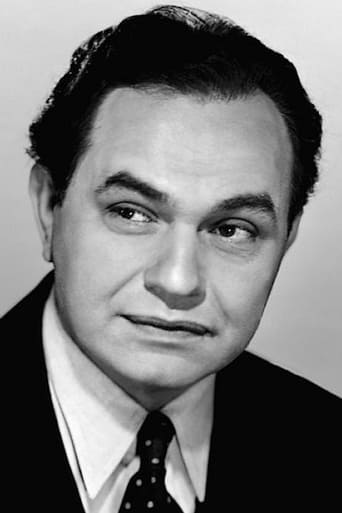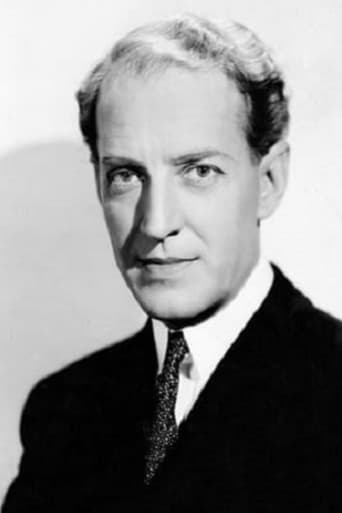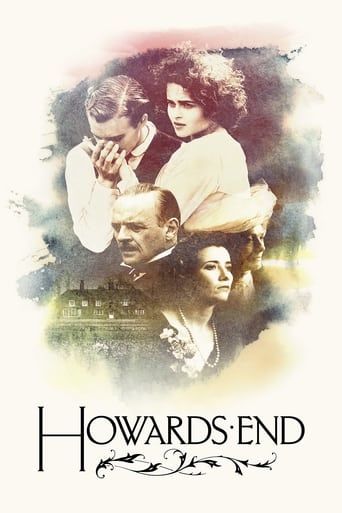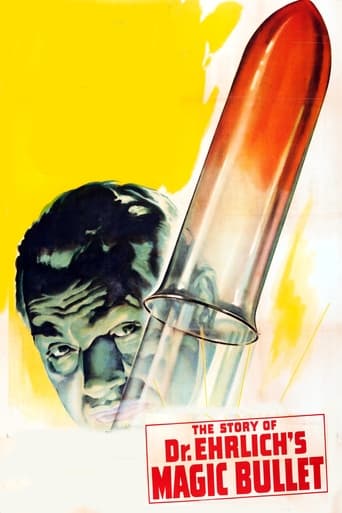
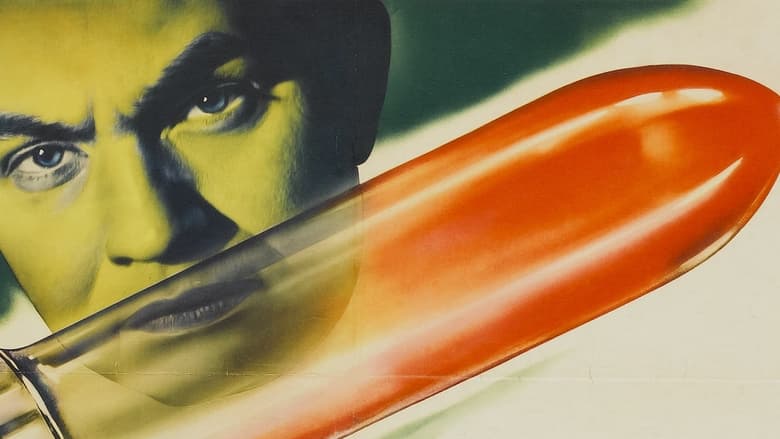
Dr. Ehrlich's Magic Bullet (1940)
True story of the doctor who considered it was not immoral to search for a drug that would cure syphillis.
Watch Trailer
Cast


Similar titles
Reviews
Unfortunately Edward G. Robinson was in my humble opinion, unable to portray the Nobel winning scientist Dr. Paul Ehrlich with any credibility. At first glance Edward G. Robinson's really fake hair piece, mustache and beard appeared to be purchased from a five and dime store. I did not see him speak in any scientific terms either. For example, when Dr. Ehrlich was attempting to gain new funding for his continued experiments when the government cut his funding, he accepted a dinner invitation which his servant like wife (Ruth Gordon) arranged from a wealthy socialite. At the dinner table Dr. Ehrlich proceeds to explain to his wealthy dinner hostess by taking out from his pocket an ink pen and writing out in simple terms directly on to her white table linen by "dumbing down" his scientific experiments using rats, rabbits, and monkeys, such that before he was finished with his explanation, the only person left from the original 24 people was the hostess herself. And yet, we the audience did not hear his explanation(s) to his gracious socialite hostess.I will say that Dr. Ehrlich was known to smoke more than a dozen cigars every day, and his office secretary was very close to him and appeared to know him best which is why her character was portrayed in this film as the caring employee when he took ill. With so many great actors/actresses available in the 1940's era of filmmaking I don't know why the producers settled for the gangster mode image of Edward G. Robinson. I just did not think Edward G. Robinson's portrayal of the famed Nobel prize winner Dr. Paul Ehrlich was delivered with sufficient preparation and final delivery of his lines to be regarded as authentic.I give the film a 4 out of 10 rating for it's historical value, but I had to take away points for the sub standard delivery of the biographical story of Dr. Paul Ehrlich by Edward G. Robinson. I was not impressed.
Grand biopic as only Old Hollywood could do so well. An excellent performance from Edward G. Robinson as Dr. Paul Ehrlich, who works to create a cure for syphilis while battling tuberculosis and his peers' small-mindedness. With direction by the great William Dieterle and a script co-written by John Huston, this is an exceptional film. It's not easy to make a great movie out of what is essentially a medical research story, but they pull it off. Terrific supporting cast including Ruth Gordon, Donald Crisp, Otto Kruger, Donald Meek, Henry O'Neill, Maria Ouspenskaya, Albert Bassermann, Louis Calhern...so many more. Just a great lineup. Pretty daring to make a movie about syphilis at a time when the Production Code was in full effect. Wonderful biopic you should definitely check out.
If you think Eddie Robinson only played tough little low lifes in Hollywood movies, this film shows that he could convincingly portray heroic scientific pioneers, as well. I don't pretend to have seen the majority of films he played in, as most are not my type. However, his portrayal of pioneer medical researcher Paul Ehrlich is among the few of his performances that stays with me. Just as Muni was born to play Louis Pasteur and Emile Zola, and Kirk Douglas to play Vincent van Gogh, I believe Robinson was born to portray Ehrlich. He appropriately plays him as a more subdued personality than Muni's Pasteur, but not without interest. Certainly, Robinson deserved an Oscar nomination for this role as well as for his riveting performance as Wolf Larsen in "The Sea Wolf", the following year.Now, there is the question of how many of the details of this film are based on fact. Hollywood is notorious for manufacturing biographical details, while ignoring reality. From what I was able to find on the net, there is some fact and some fiction in the details, but the overall gist is reasonably accurate. The film repeatedly portrays Ehrlich's financial and employment insecurities, subject to the meddling of short-sighted politicians and committee members, as well as his up and down relationships with some of his colleagues. In this, he was not unlike his modern academic counterparts. I could find no reference to the adder bite incident, nor the implication that it was important in guiding his later research. His importance in developing a stain for TB is overstated and portrayed wrongly. However, he was instrumental in promoting the general idea of using selective stains to visualize cellular and tissue details, as well as to visualize bacterial pathogens. 1882 was a banner year in the development of selective bacterial stains. Not only did Koch and Ehrlich develop rather similar stains for the TB bacterium, the acid fast stain for TB was soon after discovered, still used today. Meanwhile, Hans Gram was developing his still widely used Gram stain for most bacteria. As portrayed in the film, there was much controversy surrounding the safety, effectiveness and advisability of using Ehrlich's arsenical compounds for curing or preventing the transmission of syphilis. Much of the controversy was instigated by a widely held belief that venereal diseases were rightly God's punishment for promiscuity and thus should not be meddled with. After Ehrlich's death, it was discovered that adding small amounts of bismuth or mercury to the arsenic compound usually increased its effectiveness. Mercury, and the more effective, less toxic, potassium iodide were often administered before this, apparently often with good results. Thus, the implication in the film that there was no effective prior treatment should be qualified.As portrayed in the film, Ehrlich's chain smoking of cigars no doubt hastened his relatively early death from stroke. Surprisingly, it apparently did not exasperate his TB. He did spend some time in Egypt, which did send his early case of TB into permanent remission, demonstrating that 19th century ideas of sun, dry fresh air and rest for treating TB did sometimes work. Unfortunately, this approach was not practical for the mass of working class people.
It's very hard to believe that this movie was made in 1940, as much of the plot centers on Dr. Ehrlich's attempts to create a cure for syphilis. At times, the studio appeared to dance around the whole STD aspect of the disease, but it was extremely daring to try to cover such a taboo topic.It's actually quite amazing that a story as seemingly mundane and medical research is as compelling as it is. I think this is due to excellent directing, writing and acting. In particular, Edward G. Robinson is a standout as the lead. This movie clearly demonstrates that his range far exceeded playing gangsters or that annoying Egyptian in The Ten Commandments.


